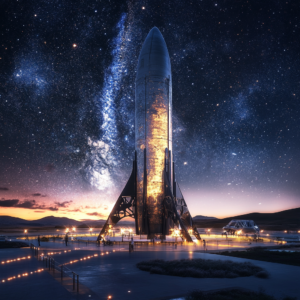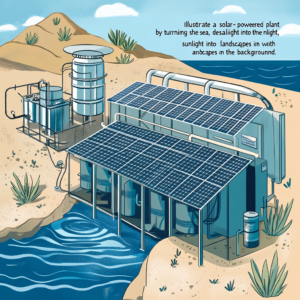
“Boosting EV Battery Supply: Impact of US Industrial Strategy”
The American automotive landscape is on the verge of a electrifying transformation, and if you squint just a bit, you might just glimpse the glorious future gliding smoothly on the horizon. Buckle up, because the United States is turbocharging its electric vehicle (EV) battery supply chain, and you can thank a little thing called the Inflation Reduction Act (IRA) for it. This nifty piece of legislation, much like the secret sauce in a beloved family recipe, is mixing up a frenzy of excitement that promises to shake the industry to its core. Let’s rev our engines and take a fearless spin around the track of how these policies are steering the EV scene in the U.S.
To kick off this joyride, let’s spotlight the IRA as the transformative juggernaut it’s become. Think of it as the sun breaking through a dreary cloud cover, a real game-changer that has thrown down the gauntlet against fossil fuel dependency. Tax credits, like golden tickets strewn across the pavement, beckon consumers and businesses alike to hop into the EV lane. The star of the show? The $7,500 New Clean Vehicle Credit, which is a generous pat on the back for anyone looking to trade in gasoline guzzlers for sleek, silent ride-sharing alternatives. Who could resist such a sweet deal?
But wait, there’s more! The IRA isn’t just a casual handshake; it’s a full-on bear hug of incentives and regulations. One of the urgency-infused requirements is a stipulation that battery components and critical minerals not originate from “Foreign Entities of Concern.” Oh yes, you guessed it, we’re talking about nations like China, Russia, Iran, and North Korea. Picture the U.S. flexing its muscles, wanting to rely on homegrown resources rather than placing bets in a high-stakes poker game with the likes of Beijing or Moscow. This is not just smart policy; it’s savvy strategy, wrapping critical sectors in a cocoon of national security.
Let's not forget the economic ripples. Those tax credits and robust investments have sent shockwaves through the private sector. Over $173 billion has been pledged since President Biden hit the gas pedal on his term. This isn’t just about shiny new EVs; it’s about viable megafactories springing up like daisies after a rain, creating a wealth of jobs that leave traditional industries in the dust. Every EV produced means more bucks flowing into hardworking hands, and who among us doesn’t want to be part of this job-creating blitz?
Yet, let’s pump the brakes for a moment because it’s not all sunshine and rainbows. The American EV battery supply chain is still reeling in its vulnerabilities, not the least of which is its nagging dependency on China. Research from institutions like Carnegie Mellon spills the beans, revealing that should the Great Wall falter in its exports, our beloved EV battery supply chain could come crashing down. It’s a stark reminder that Rome wasn’t built in a day, and our EV supply chain too needs diversification to weather any geopolitical storms that may come our way.
And then there are those pesky leasing loopholes. The IRA has set the stage and choreographed the dance, but automakers might still waltz around crucial restrictions if they lease vehicles rather than sell them outright. It’s a minefield of regulations and interpretations, and if you’re not careful, the concert could turn into a chaotic jam session.
What about the economic perks of the IRA’s bold moves? Well, hold onto your hats, because the transition to electrification promises to crank out jobs, alleviate the economic burdens tied to oil dependence, and save consumers a hefty chunk of change. Manufacturing these slick machines requires a more labor-intensive process. Who doesn’t love the thought of a bustling factory floor humming with activity, churning out electric chariots that save consumers more bucks and cents over time, letting people redirect their hard-earned cash towards whatever their hearts desire?
Then there’s the environment, which absolutely mustn’t be overlooked. The IRA isn’t just paving the way for a gasless future; it’s slashing greenhouse gas emissions and rolling out the welcome mat for sustainability. Vehicle electrification is a crucial piece of the puzzle, and with the IRA’s espresso shots of support for EV adoption and domestic battery manufacturing, we’re steering humanity towards a greener path. Sure, we might be brewing a revolution right here at home, but it’s likely to have a ripple effect felt across the globe.
As we zip away from our leisurely cruise discussing the IRA, let’s shift gears into the world of implementation and the road ahead. Success hinges on clarity, and that’s where the Treasury Department and the Department of Energy come into play, wielding final rules and interpretive guidance. Their goal? To bring order and predictability to the chaotic realm of the EV marketplace. After all, a well-structured environment makes it easier for automakers like Tesla, Ford, and GM to comply with these game-changing rules.
The race isn’t over, however. Will automakers like GM, with their adventurous investment in Lithium Americas Corp., manage to snag the critical minerals needed to align with IRA’s tenets? Are they drawing up plans with suitable partners to stay FTA-compliant? Let’s watch and see how this intricate dance unfolds and how government support continues to fuel this ambitious venture.
In this grand theater of federal initiatives, the IRA is carving a niche for itself—it's potent, it’s ambitious, and it’s ready to spin the wheel of innovation and resilience for the U.S. battery supply chain. The wave of domestic manufacturing has not only set the stage for independence but has also reignited distinctive waves of entrepreneurship and job creation.
If there’s one thing the IRS can’t tax, it’s the enthusiasm for this monumental shift in American industry. The excitement buzzing through our communities is palpable, as we witness the hands of fate shaping our future—the electric one. And folks, this is just the beginning!
So, do you want to keep your finger on the pulse of the latest buzz surrounding EV policies and technological advancements? Don’t be left in the dust—join the conversation and keep that curiosity ignited by subscribing to our Telegram channel: @channel_neirotoken. Trust me, you won’t want to miss it!

